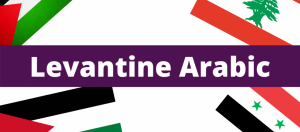Language/South-levantine-arabic/Grammar/Gender
Hi South Levantine Arabic learners! 😊
In this lesson, we will focus on the gender in South Levantine Arabic. This is an essential notion in the Arabic language, and it can impact the meaning of words, as well as their declinations, and pronouns. After this lesson, you will be able to apply gender rules in your sentences, and understand the subtle nuances that come with them. So, let's get started!
Take some time to dive into these other pages after completing this lesson: Give your Opinion & Conditional Mood.
What is Gender in South Levantine Arabic?[edit | edit source]
Gender is a grammatical category that is used to distinguish between masculine and feminine entities. In South Levantine Arabic, nouns, and adjectives are either masculine or feminine, and they should be matched with their corresponding gender agreement in verbs and pronouns. For example, the word "book" (كتاب) is masculine, while the word "pen" (قلم) is feminine. Therefore, if we want to say "the book is good" in South Levantine Arabic, we should say "الكتاب جيد" (al-kitabu jayid), whereas if we want to say "the pen is good," we should say "القلم جيد" (al-qalamu jayid), where the underlined words show the masculine and feminine agreement respectively.
To know the gender of a noun, you need to memorize it since it is not always related to the meaning of the word. However, there are some patterns that can help you guess the gender, especially for imported words. For example, words that end with "-ة" (-a) are usually feminine, while words that end with other vowels, such as "-ي" (-i) or "-و" (-u) are usually masculine. Nonetheless, there are exceptions to these patterns, which make it essential to learn the gender of each word by heart.
Gender's Impact on Pronouns[edit | edit source]
One of the most significant effects of gender in South Levantine Arabic is on the pronouns. Unlike in English, Arabic pronouns change based on the gender of the noun they represent, which makes it necessary to know the gender of that noun to select the appropriate pronoun. Here are the singular pronouns for both genders:
| Masculine | Feminine |
|---|---|
| هو (huwa) | هي (hiya) |
As you can notice, the masculine pronoun is "هو" (huwa), while the feminine is "هي" (hiya). Therefore, if you want to say "He is a student" for a male student, you should say "هو طالب" (huwa talib), while for a female student, you should say "هي طالبة" (hiya taliba).
Gender and Adjectives[edit | edit source]
Adjectives are also subject to gender agreement in South Levantine Arabic, which means that they change based on the gender of the noun they describe. To form a feminine adjective, we usually add the suffix "-ة" (-a) to the masculine form, as in the example below:
| Masculine | Feminine |
|---|---|
| عالي (ali) | عالية (aliya) |
As you can see, the masculine adjective "عالي" (ali) meaning "high," becomes "عالية" (aliya) when referring to a feminine noun, such as "a high mountain" (جبل عالي - jabalun aliun) vs. "a high ambition" (طموح عالي - tamuhun aliyun).
Gender in Plural Nouns[edit | edit source]
In South Levantine Arabic, some masculine plural nouns can have a feminine singular form. For example, the word "men" (رجال - rijal) is masculine in the plural, but its singular form "man" (رجل - rajul) is masculine as well, despite having the feminine suffix "-ة" (-a). Therefore, the sentence "these men are helpful" should be translated as "هؤلاء الرجال مفيدين" (hula'i al-rijalu mufidun), while the phrase "the man is helpful" is "الرجل مفيد" (ar-rajulu mufidun).
Examples in Context[edit | edit source]
To better understand the concept of gender in South Levantine Arabic, let's create a dialogue between two persons who want to describe their family members.
- Person 1: هل لديك أخت ؟ (hal ladayka ukhtun?) Do you have a sister?
- Person 2: نعم، لدي أخت صغيرة. (na'am, ladayya ukhtun saghira) Yes, I have a young sister.
- Person 1: هل هي مدرسة؟ (hal hiya mudarisa?) Is she a teacher?
- Person 2: لا، هي تلميذة في المدرسة. (la, hiya taliba fi al-madrasati) No, she is a student in school.
In this example, Person 1 uses the feminine pronoun "هي" (hiya) to ask about Person 2's sister, which indicates that she is referring to a female object. In turn, Person 2 confirms that his sister is female by answering with the feminine form of "I have" (لدي) and the adjective "young" (صغيرة - saghira), which matches the gender of the noun it describes. Moreover, he clarifies that his sister is not a teacher, but a student, by using the female singular noun "student" (تلميذة - taliba), and the word "school" (مدرسة - madrasa), which is also feminine.
Conclusion[edit | edit source]
In conclusion, gender is a crucial element in South Levantine Arabic grammar, and mastering it can help you avoid misunderstandings and mistakes. To recap, gender affects the agreement of pronouns, adjectives, and verbs, and it can also shape the meaning of words. Therefore, we encourage you to practice this grammar topic by creating your own sentences and seeking feedback from native speakers and other language learners. Additionally, we invite you to check out the Grammar section of Polyglot Club to enrich your knowledge of South Levantine Arabic language and culture.
➡ If you have any questions, please ask them in the comments section below.
➡ Feel free to edit this wiki page if you think it can be improved. 😎
Sources[edit | edit source]
Upon wrapping up this lesson, take a look at these related pages: Adjectives & Plurals.
Other Lessons[edit | edit source]
- Negation
- Give your Opinion
- Pronouns
- How to Use Be
- How to Use Have
- Adjectives
- Plurals
- Questions
- Conditional Mood

